Angkety map: Digital
resource report
Download Angkety map
Angkety map is a comprehensive guide to the benefits and challenges of using digital resources in language work. It was commissioned in 2014 by the Australian Government’s Indigenous Languages Support Program and written with the input of language speakers, language learners, community language workers, representatives of language centres and academics.
Language programs have been creating and using language resources for many years. As technology advances, more and more of these resources are being prepared digitally.
Download the summary poster (1.3Mb)
Angkety map was developed to help language workers decide on suitable digital resources for their programs. It is an accessible tool that gives an overview of current directions, recent approaches and major issues in the use of digital resources for Indigenous language work. The resource considers the range of digital tools developed during the past decade for use in language projects. It includes stories and experiences from language workers, centres and programs that demonstrate how they have created their digital resources and provides inspiration for developing language resources.
The report also proposes strategies to mitigate the identified risks and setbacks language workers, programs and communities face when developing a digital resource for their language.
Angkety map explores a number of considerations to guide the planning and development of a digital language resource. Some initial questions to consider might include:
What is to be done with the resource and how will it fit in with the language program?
Who will use the resource, and can they be included in the design or selection process?
What skills do the people in the group have?
Does the resource make the most of people’s existing skills and provide opportunities to develop new skills?
What is known about current resources?
From the responses of people who have contributed to this report it is apparent that the term ‘digital resources’ is used by different people to refer to different technologies. In consideration of this, throughout the report, the term ‘digital resources’ is intended to include such technologies as:
Computer programs and applications for language documentation, recording, annotation, archiving
Mobile/tablet apps (wordlists, dictionaries, music games, learning games, learning environments)
Interactive whiteboard resources
Multimedia CD-ROMs or DVDs
Websites and web applications (e.g. YouTube, dictionary sites, online learning sites, etc.)
Interactive dictionaries, word or sound lists, phrasebooks, flashcards
eBooks
Computer games
Radio programs and audio podcasts
A summary poster features a checklist of considerations to help guide decisions about the right resource for a community’s language program. With so many options available for digital resources, it is difficult to judge what is going to be the most useful and cost effect option in a specific language context. Angkety map and the associated poster are tools to help communities decide what option is best suited for their language goals.
“Anwern mpwarem iltyem-iltyemel arelh mapel kwer maparl akaltyerretyek. Website-wern anwern arrernem. If inang website altywer-ilem, ina can arerl iltyem-iltyem nthakenh apek. Anwerneh akaltyanthek iltyem-iletyemek angerrepat mapel, anwernek imperl-alhek. Anengkerrant alkenty ina rrkwek angerrepat mapel ant hand-em overilerlapetyart, passing on anwernek. Lyet anwern want-em-irrem akwerek pass em on-irretyek. We want to website-warn arrernerl anwernekenh angkety so they can iltyem-iltyem yanhek akaltyerrerl.
All the women are doing the hand sign project so that the children can learn. We are putting the signs on a website. If they open the site then they’ll be able to see how hand signs are done. The old people taught us hand sign language; they handed it down to us. They held that knowledge from the Dreaming and they handed it over and passed it on to us. Now we want to pass it on to our children. We want to put our language on the web so that the children can learn hand sign language.”
Janie Long Pwerrerl, Hanson River, 29 June 2011, Iltyem-iltyem: Australian Indigenous Sign Languages project, www.iltyemiltyem.com
'Angkety map' is from the Anmatyerr language, and means ‘many stories’. You can pronounce ‘Angkety’ by saying ‘ang’ as in 'sung', ‘ke’ as in 'keep' and ‘ty’ is a similar sound to ‘ch’ in 'church'. Pronounce ‘map’ the same as the English word 'map'. Title provided by April Campbell.
Artwork
Kungkarangkalpa Attila (2014)
by Tjunkaya Tapaya
840x1700mm
Image courtesy of Ernabella Arts
Copyright Tjunkaya Tapaya
Licensed by Viscopy, 2014


